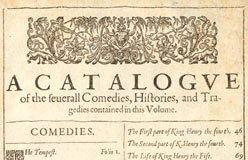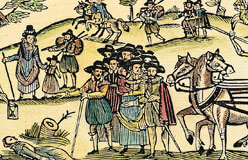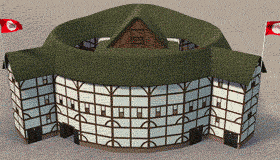Shakespeare’s tragedies have some of the same elements as the comedies, but the problems the hero faces are so great that the play ends in death.
The ancient Greek philosopher Aristotle tried to explain why audiences “enjoy tragedies.” He said it was “the tragic pleasure of pity and fear.” For example, Shakespeare’s Othello is a brave general who is tricked by the evil Iago into killing his wife out of jealousy. We pity Othello because he is noble yet flawed, but we are afraid, too, of being like him.
Shakespeare’s distinction is not in his plots, which he borrowed from novels, histories, and even other plays. Hamlet is possibly the most famous play in the world. It’s also a typical Elizabethan revenge tragedy in which a son is told by his father’s ghost to avenge his murder. It is Shakespeare’s inventive use of language that transforms the old-fashioned stories into great dramas. In a time before theaters had realistic scenery and lighting, people spoke of “hearing” plays rather than seeing them. Shakespeare’s complex characters give actors the opportunity to interpret them in different ways. That allows audiences to enjoy seeing the same play more than once.







